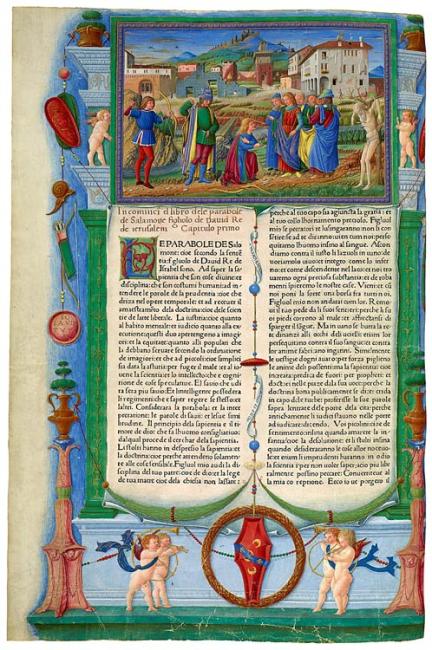
Biblia
Translated into Italian by Niccolò Malermi.
Opening, Volume 2: Shooting of the Father's Corpse
Printed on vellum by Vindelinus de Spira in Venice 1 August 1471
Purchased in 1929 PML 26984
This is the frontispiece to the second volume of the 1471 bible. The text appears to have been printed on a frayed piece of parchment suspended from an architectural monument—one of the most ambitious pictorial illusions in a Venetian book created during the Renaissance.
The framed picture at top illustrates the Shooting of the Father's Corpse, one of the apocryphal judgments of Solomon. In an inheritance dispute between the true son of a recently deceased man and an impostor, the actual son kneels before the suspended corpse, while the impostor reveals his counterfeit status by following King Solomon's command to shoot at the corpse.
Printing
In 1469—some fourteen years after Johannes Gutenberg printed a bible using movable type—this transformative technology arrived in Venice, and the city rapidly became Europe's preeminent center for book publishing. During the last few decades of the fifteenth century, a new kind of volume appeared: the hand-illuminated printed book. Trained scribes and artists carefully added chapter headings, initials, borders, and lavish frontispieces to the printed text. These luxury items were created for a wealthy and prominent clientele—predominantly Venetian nobility.
The impossibility of hand decorating ever-increasing numbers of books led Venetian printers to adopt mechanical means to embellish their printed texts. From the 1490s, it became common to illustrate books by incorporating woodcuts. As the market for printed material flourished, artists such as Titian and Battista Franco produced masterly woodcuts and engravings to enhance their reputations.
